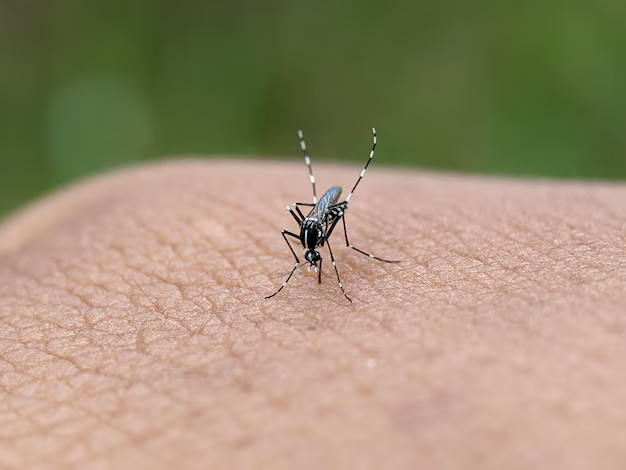Unveiling the Mystery: What Really Causes Malaria?
Malaria has plagued humanity for centuries, casting its shadow over the health of millions worldwide. But what truly causes this ancient adversary? To better understand malaria, we must delve into the specific catalysts that foster its rapid spread. From exploring the life cycle of the Plasmodium parasite to discussing preventive measures, this article aims to shed light on the intricate dance between humans and the microscopic agents of this disease.
The Culprit: Unraveling the Role of the Plasmodium Parasite
Malaria is caused by a single-celled parasite from the genus Plasmodium. There are several species responsible for malaria in humans, but four primary types stand out:
- Plasmodium falciparum: The most dangerous and prevalent, often leading to severe malaria.
- Plasmodium vivax: Can remain dormant in the liver, causing relapse.
- Plasmodium ovale: Less common and generally not as severe.
- Plasmodium malariae: Known for the potential of chronic infection that can last for years.
How the Infection Begins
The story of malaria infection begins with the bite of an infected Anopheles mosquito. This mosquito acts as the primary vector in the disease’s transmission process. Here's how the cycle unfolds:
- Mosquito bite: When an infected mosquito bites a human, it transmits the Plasmodium sporozoites into the bloodstream.
- Liver invasion: These sporozoites travel to the liver, where they multiply. This stage lasts anywhere from a week to several months, depending on the species.
- Bloodstream entry: The matured parasites re-enter the bloodstream, infecting red blood cells and multiplying further. This is the stage where symptoms start to appear.
Transmission Beyond the Mosquito
While the mosquito bite is the primary method of transmission, there are other, less common ways the Plasmodium parasite can spread:
- Blood transfusions: Receiving contaminated blood during a transfusion can result in malaria transmission.
- Organ transplants: Similar to transfusions, if an organ containing Plasmodium parasites is transplanted, the recipient can become infected.
- Sharing needles: Parasitic transmission can occur when needles are shared among drug users.
- Congenital malaria: In rare cases, the parasite is passed from an infected mother to her baby during childbirth.
As daunting as these routes may seem, understanding them equips us with better defense strategies against malaria.
The Science of Infection: How Malaria Affects the Body
Once in the bloodstream, the Plasmodium parasites wreak havoc on the body. But what exactly happens that makes malaria so devastating?
Symptoms and Effects
The hallmark symptoms of malaria include:
- High fever
- Chills and sweats
- Headaches
- Muscle pain
- Fatigue
In severe situations, an infected individual may experience:
- Organ failure
- Anemia due to destruction of red blood cells
- Cerebral malaria, which affects the brain and is potentially fatal
The Immune Response
When infected, the body mounts an immune response to fight the invaders. However, the Plasmodium parasite has evolved to evade the immune system, making it challenging for the body to clear the infection without medical intervention.
Prevention: Reducing the Risk of Malaria
Preventing malaria hinges primarily on minimizing exposure to mosquito bites and thereby breaking the transmission cycle.
Personal Preventive Measures
Here’s how individuals can shield themselves from malaria:
- Use of insect repellents: Products containing DEET or other EPA-approved repellents can effectively deter mosquito bites.
- Sleeping under bed nets: Preferably insecticide-treated, these provide a physical and chemical barrier against mosquitoes.
- Wearing protective clothing: Long sleeves and pants, especially during evenings and nights when mosquitoes are most active, can significantly reduce the risk of bites.
- Staying indoors during peak mosquito activity: This can be particularly effective if environments are well-screened.
Community and Environmental Interventions
Collective efforts can also curtail mosquito populations:
- Spraying insecticides: Indoor residual spraying can drastically reduce mosquito numbers in a community.
- Eliminating standing water: Draining or treating standing water where mosquitoes breed can significantly cut down their population.
- Implementing malaria control programs: Community-level health education and awareness campaigns are crucial in high-risk areas.
Global Efforts and Research: A Fight Against Time
The battle against malaria is not only fought on personal and community levels but also at a global scale through research and policy.
Vaccine Development
One of the most promising advances is the ongoing development of malaria vaccines. While the RTS,S vaccine has shown some success, researchers continue to strive for higher efficacy levels.
Innovative Technologies
Innovative approaches are being explored, such as:
- Genetic engineering of mosquitoes to render them incapable of transmitting the parasite.
- Mapping and surveillance technologies to predict and respond to malaria outbreaks efficiently.
Policy and Funding
Global health policies and adequate funding support are pivotal. Organizations like the World Health Organization (WHO) and various NGOs work tirelessly to implement and support malaria elimination initiatives, especially in endemic regions.
The Road Ahead
While the journey to eradicate malaria is long and fraught with challenges, the path forward is marked by dedication, innovation, and global cooperation. Understanding what causes malaria empowers individuals and communities around the world to participate actively in this fight, armed with knowledge and preventive strategies.
Staying Informed and Engaged
Remaining informed about malaria is essential, especially for those traveling to endemic regions or living in areas where the disease is prevalent. Encouraging education and awareness can foster proactive approaches to prevention and treatment.
Key Takeaways: How to Protect Yourself from Malaria 🦟
- Beware the Mosquito: Use repellents, sleep under treated bed nets, and wear long sleeves. 🛡️
- Stay Indoor During Peak Hours: Limit exposure during twilight and nighttime. 🌙
- Community Actions: Support spraying and drainage initiatives to tackle mosquito breeding grounds. 📉
- Travelers’ Tip: Take prophylactic medications as advised when traveling to malaria-prone areas. ✈️
- Stay Updated: Follow global research for vaccines and new prevention methods. 📢
Remember, informed actions and collective efforts are our strongest defenses against malaria's relentless advance.
